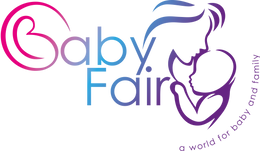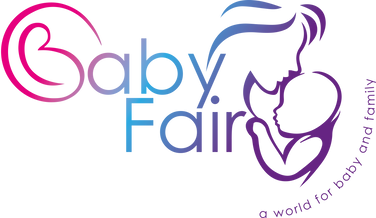Identifying your baby’s true needs vs parental wants

Becoming a parent is exciting, but it often comes with pressure to buy more than necessary. Shops, adverts, and social media can make us think our baby needs every new product on the market.
In reality, babies need comfort, care, and safety — not endless gadgets and accessories. Understanding the difference between what’s truly needed and what’s simply wanted helps you save money and make smarter choices.
The Difference Between Needs and Wants
A baby’s needs are the things that support their safety, health, and development — such as proper sleep, feeding, hygiene, and warmth. Parental wants are items that look appealing or promise convenience but aren’t essential. Some are useful later, but not from day one. Learning this difference helps parents shop with purpose instead of impulse.
The Simple Decision Framework
Five Questions to Ask Before Buying
When deciding what to buy for your baby, ask yourself these questions:
- Is it safe and approved for UK standards?
- Does it support my baby’s basic needs or comfort?
- How often will I use it?
- Can I borrow or buy it second-hand safely?
- Will my baby outgrow it quickly?
If the answer to most of these questions is “no,” it’s likely a want, not a need. This simple check helps reduce waste and unnecessary spending.
Safety Comes First
Safety should always guide your decisions. Choose items that meet British Standards, like BS EN 716 for cots and BS 1877 for mattresses. Avoid products that have been recalled or are not suitable for newborns. Reliable safety-tested items will always matter more than fancy designs or extra features.
Understanding Baby’s True Essentials
Safe Sleep and Comfort
Newborns spend most of their time sleeping. The safest sleep setup includes a firm mattress, fitted sheet, and a cot or Moses basket that meets UK safety standards. Avoid pillows, loose blankets, and toys in the cot, as they can cause suffocation risks. A sleeping bag or swaddle blanket helps your baby stay warm and secure.
Feeding Basics
Whether you breastfeed or bottle-feed, keep feeding simple. You’ll need feeding bottles, sterilising equipment, burp cloths, and a comfortable feeding chair. Avoid buying too many bottles of different types; test one or two to see what works best for your baby. Breastfeeding mothers may find a good nursing pillow or breast pump helpful but not essential from the start.
Hygiene and Nappy Care
Cleanliness is key for your baby’s health. Stock up on nappies, wipes, baby-friendly soap, cotton wool, and a soft towel. A changing mat is handy but you don’t need a full changing station unless space allows. A small baby bath or a support seat for your regular tub works well. Keep bath time gentle and brief using mild products made for babies.
Clothing Essentials
Babies grow fast, so start with only a few basics — sleepsuits, vests, hats, and socks. Choose soft, breathable cotton. Avoid buying too many outfits in newborn size; many babies outgrow them in weeks. Practical clothing that’s easy to wash and wear is far more useful than designer pieces.
What Parents Often Want But Don’t Always Need
Fancy Gadgets and Big Purchases
It’s easy to think every baby needs a swing, bouncer, or monitor with multiple features. Most of these are optional. A baby can rest comfortably in a safe cot or pram. Gadgets that promise to soothe or entertain often end up unused. It’s better to buy these later if you truly need them.
Decor and Nursery Extras
A cute nursery is lovely, but babies don’t notice colours or decorations at first. What matters most is a calm, safe space. You don’t need themed wallpaper, matching furniture, or expensive lighting. Focus on ventilation, safety, and comfort. A basic cot, clean bedding, and good temperature control are enough in the early months.
Fashion Over Function
Tiny shoes, headbands, and fancy outfits look adorable in pictures but add little value to your baby’s comfort. Practical clothes that keep your baby warm and make changing easy are smarter choices. Remember, comfort always beats style at this stage.
Balancing Needs and Wants on a Budget
Smart Buying Tips
You don’t need to buy everything at once. Start with essentials and see what your baby actually uses. Make a list of “must-haves” and “wait-and-see” items. Some things can wait until your baby is a few months old. Buying step-by-step helps you manage your budget and avoid clutter.
When shopping, choose quality over quantity. One durable cot, a good pram, and a few soft sleepsuits will serve better than many low-quality items. Always check for UK safety marks and product recalls before purchasing.
Second-Hand and Borrowed Items
Many new parents save money by buying or borrowing second-hand baby gear. It’s a smart choice as long as safety is not compromised. Avoid second-hand mattresses and car seats because they can lose safety features over time. For other items like clothes, toys, or high chairs, second-hand is often fine if cleaned properly.
Where to Save and Where to Spent
Spend wisely on products that affect your baby’s health and comfort — like a safe cot, firm mattress, and reliable pram. Save on extras such as designer clothes or advanced gadgets. Babies grow fast, and some expensive items are used only for a short time. A balanced approach helps you provide comfort without waste.
Your Simple Baby Checklist
Below is a short and clear list that separates true needs from nice-to-haves.
Baby Needs (Essentials)
- Cot or Moses basket meeting UK safety standards
- Firm mattress and fitted sheets
- Sleepsuits, vests, and socks (4–6 sets)
- Nappies and baby wipes
- Feeding bottles and steriliser (if bottle feeding)
- Burp cloths and bibs
- Baby bath or support seat
- Blanket or sleeping bag (season-appropriate)
- Pram or pushchair with a rain cover
- Car seat (must meet UK standards)
Parental Wants (Optional Items)
- Baby swing or rocker
- Nappy bin with scent control
- Bottle warmer
- Fancy outfits and shoes
- Room thermometer with Wi-Fi connection
- Video baby monitor
- Themed nursery decor
- Multiple toys and plush animals
Keeping these lists in mind will help you shop with confidence and stay within budget.
Quick Decision Matrix
Before adding anything to your basket, run it through this quick check:
| Question | If “Yes”, It’s a Need | If “No”, It’s a Want |
| Does it keep my baby safe or healthy? | ✅ | ❌ |
| Will I use it every day or often? | ✅ | ❌ |
| Does it have real comfort or learning value? | ✅ | ❌ |
| Will it last at least 6–12 months? | ✅ | ❌ |
| Can I afford it without cutting other essentials? | ✅ | ❌ |
This simple test helps you decide quickly and avoid unnecessary spending.
Conclusion: Make the Best Choices for Your Baby
Every parent wants the best for their baby, but the best doesn’t always mean the most. Babies grow fast and need love, care, and safe surroundings more than expensive gadgets. By focusing on essentials, you’ll make your home safer, simpler, and easier to manage.
Take time to plan your purchases, compare products, and ask other parents what truly helped them. When you’re ready to buy, visit Baby Fair’s baby essentials collection, where you’ll find trusted, safety-tested items that meet UK standards.
Spend wisely, care deeply, and remember — your baby’s real needs are simple: safety, warmth, feeding, comfort, and love.
You may like to read: Top 5 crib accessories to simplify parenthood
FAQs
+ How many clothing outfits does a newborn really need?
Around 4–6 sleepsuits and vests are enough. You can always add more later as your baby grows.
+ Do you need a baby swing or similar gadget?
Not really. These items are optional and often take up space. A safe cot or pram is all your baby needs for rest.
+ What safety standards should I check before buying a cot or mattress in the UK?
Look for British Standards like BS EN 716 for cots and BS 1877 for mattresses. They confirm the product meets safety requirements.
+ When is it okay to delay purchasing non-essential items?
Wait until after your baby arrives. You’ll quickly learn which items you actually need and which ones are unnecessary.
SHARE:


